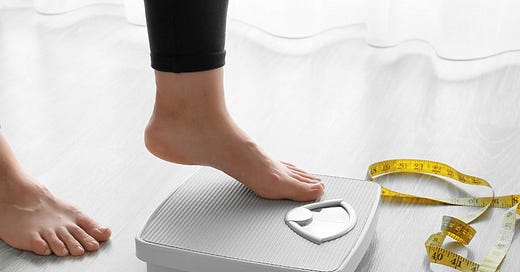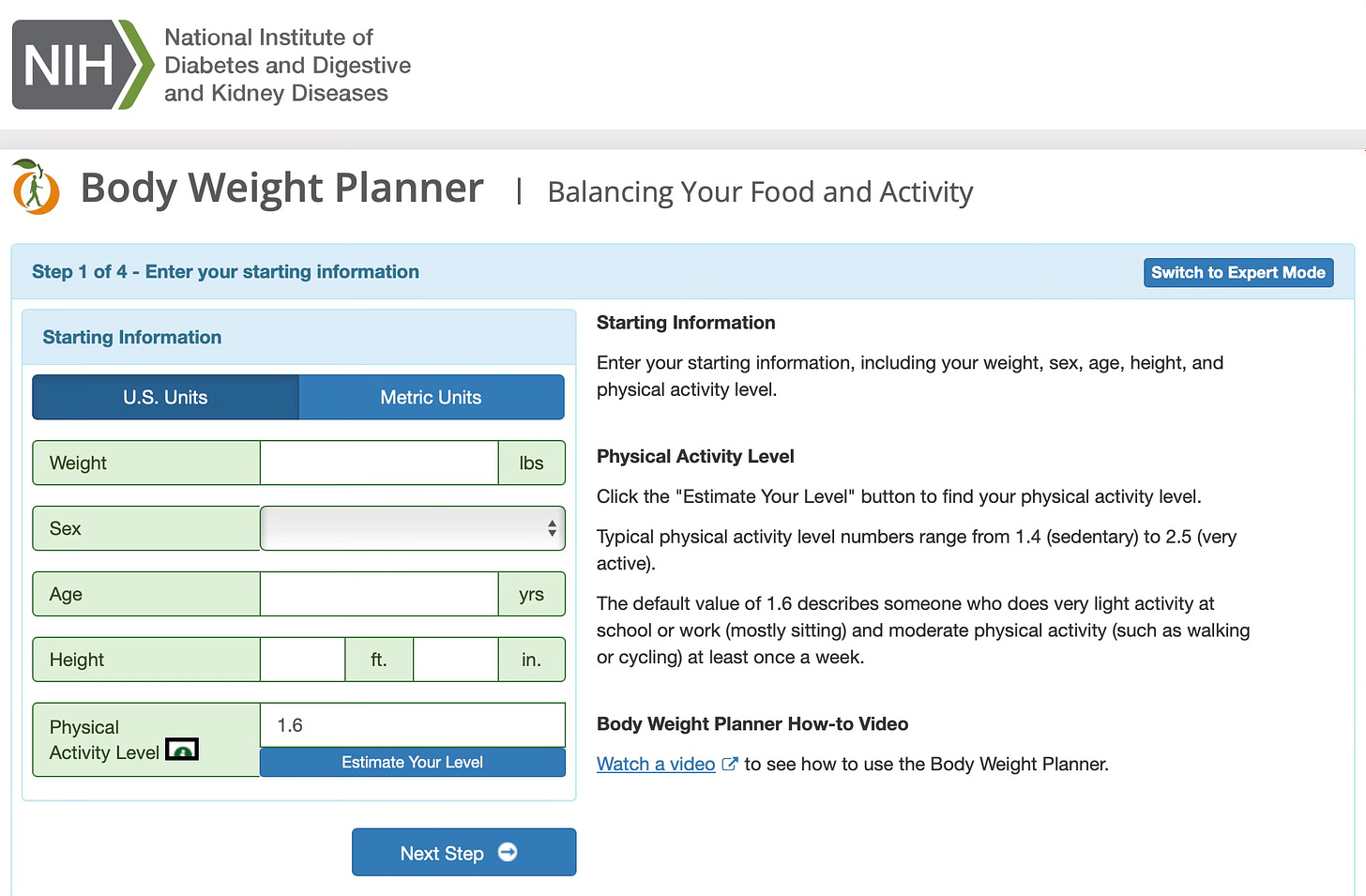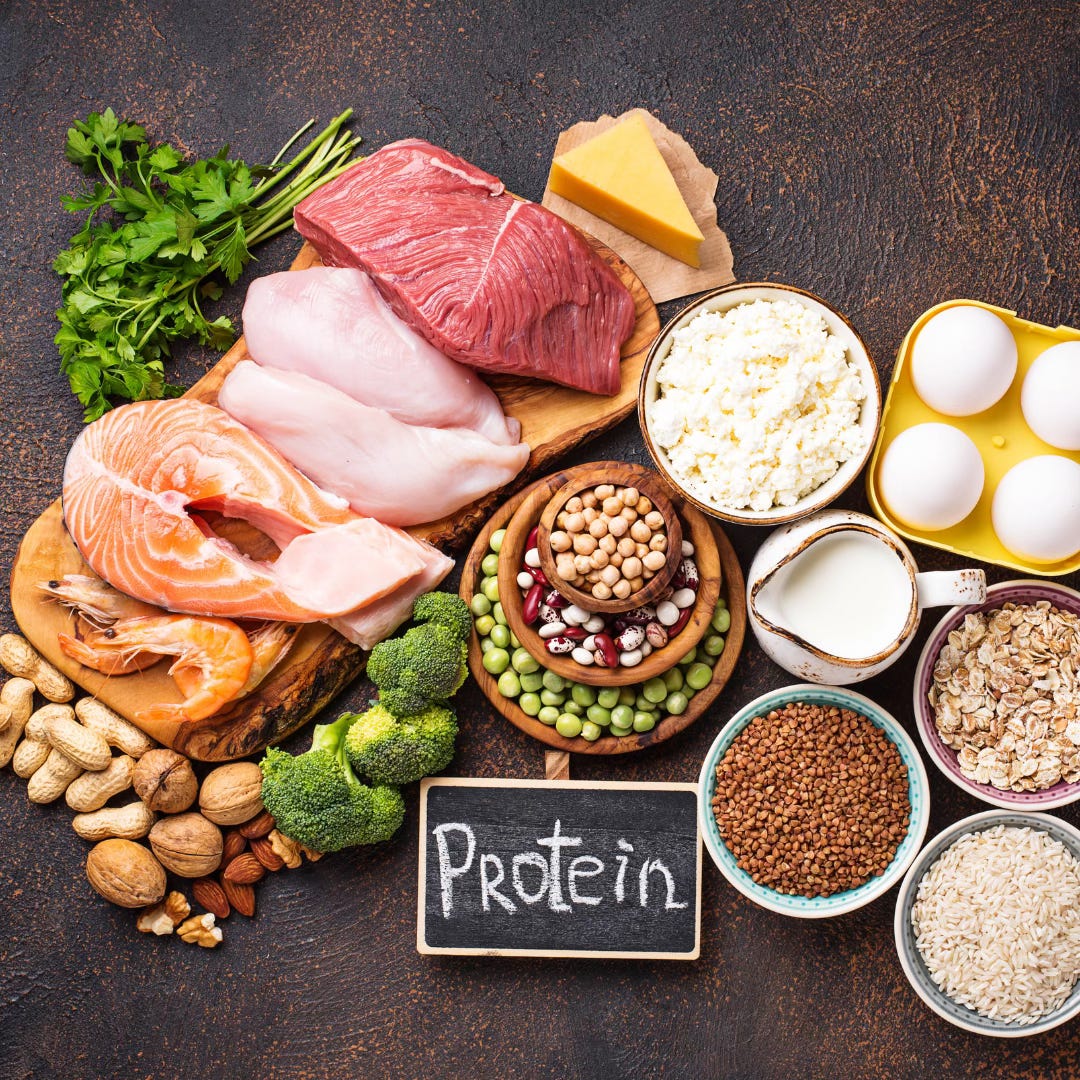Does “Eat Less, Move More” Work for Midlife Women?
Here’s how to use the advice to your advantage.
Tell me if this sounds familiar. When you were in your 20s and 30s and you wanted to drop a few pounds, you did it by cutting back on some food, increasing exercise, or both, and the weight came off. Now that you’re in your mid to late 40s or older, that approach doesn’t seem to be working. You may think menopause is to blame, but a long term study published in Science suggests metabolic rate doesn’t start to decline until age 60.
Let’s dive into the details of midlife weight control.
How Weight Loss Happens
Weight loss requires creating a calorie deficit in one of the following ways:
Eating less while burning the same number of calories
Burning more calories while eating the same number of calories
Eating less and moving around more
Perimenopause, the years before your final menstrual period, and menopause, which is when you no longer have a period, don’t affect your ability to create a calorie deficit, but it can seem like they make it more difficult. However, the menopause transition – perimenopause – does change body shape and body composition. Declining estrogen levels can mean less muscle mass and more body fat, even without weight gain. And, when you do gain weight, it tends to congregate in the belly area, another effect of having less estrogen.
How to Figure Out Your Calorie Needs
Though eating less and moving more can produce weight loss or make weight maintenance easier, it’s incredibly vague advice. How much less should you eat? How much more should you move around? How do you even start to figure that out?
You must get an idea of your daily calorie needs to better manage your weight. Guessing at how many calories you need every day for weight loss can lead to a lot of needless frustration. A reliable calculator based on the best available science can help you get started on finding the right balance for you. The National Institutes of Health has developed The Body Weight Planner to estimate calorie needs and to help plan how to reach your goal weight and maintain it.
Once you know how much to eat and exercise for your goals, you should probably account for the calories you consume rather than winging it. People are notoriously bad at correctly estimating the calories in food and they also tend to overestimate calories burned by physical activity. Following sample meal plans that offer foods you enjoy can be useful for learning what portion sizes are right for you. Or you could use an online tracker to help you record calorie consumption and calories burned in exercise.
When it comes to how a particular calorie level may affect your weight, there are no guarantees. A lot of it is trial and error because the body isn’t a machine. And here’s the ultimate irony of weight loss: You burn fewer calories as you drop more pounds. To continue losing weight, you may need to recalculate your calorie needs when you hit a plateau. You may also need to revise expectations about your weight.
The Problems with “Eat Less, Move More”
We’ve already covered the vagueness of “eat less, move more,” and there are other issues with this adage including that it assumes every woman can lose weight if she just tries hard enough. If only that were true.
Making changes to your lifestyle habits requires resources, including time, to shop and prepare nutritious meals and snacks, and there are many social, environmental and genetic factors outside of a woman’s control that can affect her ability to eat better and get enough exercise. In addition, some women are triggered by tracking everything they eat and how much they move. If that’s you, don’t do it. Making simple tweaks to your eating plan without counting calories can be helpful, too.
For the most part, total calorie intake dictates weight but the types of foods you eat matter for weight control, too. You may not need to eat less because eating differently can also help with weight control. For example, including more whole grains, fruits, vegetables, and beans is helpful. A 2023 randomized controlled trial published in Nature found that a fiber-rich diet helped people burn an average of 166 more calories a day than a low-fiber diet. Check out this post I wrote about fiber and how to eat more of it.
Including adequate amounts of protein every day can help to keep you fuller for longer and may burn some extra calories. That’s because the body uses more energy to process protein than it does for fat or carbohydrate. Getting enough protein also helps preserve muscle tissue, whether you’re trying to lose weight or not, and more muscle can provide a slight calorie-burning advantage. Learn more about the importance of protein in perimenopause and beyond here.
Speaking of preserving muscle tissue, there’s no need to take hours out of your day for regular physical activity. You don’t even have to join a gym to get results. A mixture of moderate-intensity aerobic exercise, such as brisk walking, and two bouts of strength training weekly (which you can do at home with free or purchased online programs) is beneficial for making and maintaining muscle, weight control, and overall health.
The Best Way to Lose Weight
So, should you follow the advice to eat less and exercise more as a midlife woman with weight control on her mind? There’s no question that a calorie deficit is required to lose the pounds. If you want to maintain your weight, it may be time to take a hard look at calories in and calories out to prevent future weight gain. I had to do that when I gained weight during perimenopause. I wrote about my experience so you can read about what I went through and how I handled it.
It may take longer to drop the pounds in midlife even with a calorie deficit but resist the urge to try extreme diets to get faster results. You’ll only gain the weight back (trust me). It’s a good idea for your overall health to accept a slower rate of weight loss by following an eating plan that satisfies your nutrient needs and doesn’t compromise your muscle, brain, bone, or mental health. That’s the idea behind the book I wrote with my friend and fellow registered dietitian Hillary Wright called The Menopause Diet Plan, A Natural Guide to Hormones, Health and Happiness.
What do you think? Does “eat less, move more” make sense to you? Let me know!







